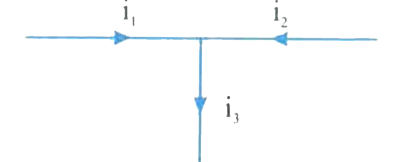The function x=Asin2(ω)t+Bcos2(ω)t+Csin(ω)tcos(ω)t represent (SHM) for which of the option(s).
A
for all value of A,BandC(C≠0).
B
A = B, C = 2 B
C
A = - B, C = 2 B
D
A = B, C = 0
Video Solution
Text Solution
The correct Answer is:A, B, C
The given equation is
x=Asin2ωt+Bcos2ωT+Csinωtcosωt
Rearranging the equation in a meaningful form (for interpretation of (SHM)
s=A2(2sin2ωt)+B2(2cos2ωt)+C2(2sinωtcosωt)
=A2[1−cos2ωt]+B2[1+cos2ωt]+C2[sin2ωt]
(a) For A=0andB=0,x=C2sin(2ωt)
The above equation is that of (SHM) with amplitude C2 and angular frequency 2ω. Thus option (a) is correct.
(b) If A=BabdC=2Bthenx=B+Bsin2ωt
This is equation of (SHM). The mean position of the particle executing (SHM) is not at the origin. option (b) is correct.
( c) A=−B,C=2B, Therefore
x=Bcos2(ω)t=2Bsin2(ω)t
Let B=Xcosϕ+Xcos2(ω)tsin(ϕ) ltbgt This represents equation of (SHM).
(d) A=B,C=0andx=A. This equation does not represents (SHM).
|
Updated on:21/07/2023
Topper's Solved these Questions
Similar Questions
Knowledge Check
- Question 1 - Select One
The function sin2(ωt) represents
Aa periodic, but not simple harmonic motion with period 2π/ωBa periodic, but not simple harmonic motion with period π/ωCa simple harmonic motion with a period 2π/ωDa simple harmonic motion with a period π/ω - Question 2 - Select One
The function sin2(ωt) represents
Aa periodic, but not simple harmonic, motion with a period 2π/ωBa periodic, but not simple harmonic with a period π/ωCa simple harmonic motion with a period 2π/ωDa simple harmonic motion with a period π/ω - Question 3 - Select One
The function sin2(ωt) represents:
Aa simple harmonic motion with a period 2π/ω.Ba simple harmonic motion with a period π/ω.Ca periodic , but not simple harmonic motion with a period 2π/ω.Da periodic , but not simple harmonic motion with a period π/ω.
The r.m.s. value of I=I1sinωt+I2cosωt is
View SolutionFind time period of the function, y=sinωt+sin2ωt+sin3ωt
View SolutionIf y=αcosωt+bsinωt, show that it represents SHM. Determine its amplitude.
View SolutionIdentify which of the following function represent simple harmonic motion.
(i) Y=AeIωt (ii) Y=ae−ωt
(iii) y=asin2ωt (iv) y=asinωt+bcosωt
(v) y=sinωt+bcos2ωtView SolutionEquations y=2Acos2ωtandy=A(sinωt+√3cosωt) represent the motion of two particles.
View Solution


